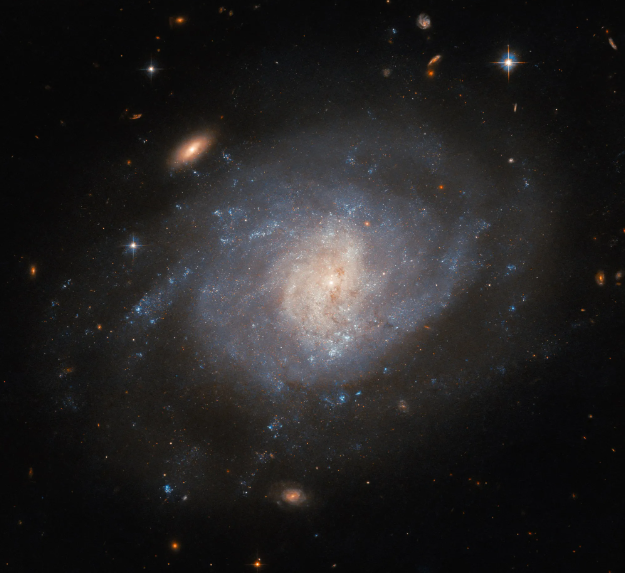NASA's Hubble Space Telescope has turned its lens towards the spiral galaxy NGC 941, a captivating celestial entity positioned approximately 55 million light-years away from Earth. But most importantly, it has an explosive past!
The intricacies of NGC 941, captured by Hubble's Advanced Camera for Surveys (ACS), unfold in this striking image. While the galaxy itself is visually stunning, the primary impetus behind collecting this data lies in an astronomical episode that unfolded within its cosmic expanse years ago - the supernova SN 2005ad, according to NASA.

Faded but Significant Supernova
SN 2005ad is a faded but historically significant supernova and it became the focal point of observation as part of a broader study investigating multiple hydrogen-rich supernovae, recognized as type II supernovae.
This exploration aimed to deepen our understanding of the specific environments where these explosive events transpire. Interestingly, the discovery credit for SN 2005ad goes to an accomplished amateur astronomer, Kōichi Itagaki, renowned for unearthing over 170 supernovae.
The intriguing aspect arises: How does an amateur astronomer outpace professionals with access to cutting-edge instruments like the Hubble Space Telescope in spotting supernova events?
The art of detecting supernovae involves a blend of skill, available tools, and a touch of celestial serendipity. Unlike many astronomical occurrences unfolding over astronomical timescales, supernova explosions occur with astonishing rapidity, manifesting suddenly, then oscillating in brightness over days or weeks, according to NASA.
Furthermore, the temporal factor plays a crucial role. The data derived from a few hours of Hubble observations demands weeks, months, or even years for meticulous processing and analysis.
In contrast, amateur astronomers, like Itagaki, contribute extended hours to active sky observation, often wielding sophisticated arrays of telescopes, computers, and software.
Transient Name Server
Amateurs, with their knack for discovering numerous supernovae, contribute to a collaborative reporting system, the Transient Name Server. This online platform proves instrumental for professional astronomers, recognizing the urgency that accompanies supernova events.
Following Itagaki's discovery of SN 2005ab, professionals swiftly engaged in spectroscopic studies, conclusively categorizing it as a type II supernova. This, in turn, paved the way for the Hubble Space Telescope to scrutinize its location, offering insights into an astronomical occurrence that would have remained elusive without the vigilance of amateur astronomers.
In the intricate dance of celestial bodies, where time is both a constraint and a catalyst, collaborative efforts between amateur and professional astronomers prove paramount.
The collective endeavor to unravel the mysteries of the universe, highlighted by the Hubble's gaze upon NGC 941 and the echo of a supernova's explosive past and underscores the symbiotic relationship between the dedicated eyes on Earth and the cosmic wonders that grace the night sky.
Related Article : NASA's Hubble Space Telescope Captures 'Butterfly Nebula' In Stunning Motion | Fun Facts About This Beautiful Space Butterfly
ⓒ 2025 TECHTIMES.com All rights reserved. Do not reproduce without permission.




